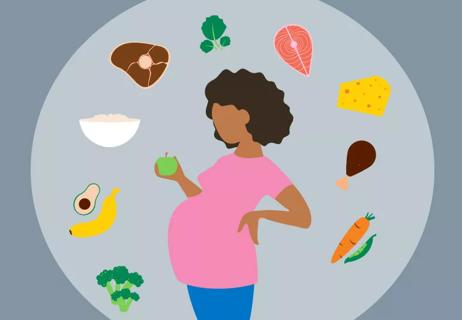Spoiler alert: Science says just one!

Your due date says your bundle of joy is overdue — but clearly, baby prefers to stay on the inside. You want to stage a coup, evict the tiny dictator and restore the balance of power, but are there any natural ways to induce labor that actually work?
Advertisement
Cleveland Clinic is a non-profit academic medical center. Advertising on our site helps support our mission. We do not endorse non-Cleveland Clinic products or services. Policy
“There’s a difference between what’s on the internet, old wives’ tales and what’s actually been studied and shown to be helpful,” says Ob/Gyn Jonathan Emery, MD. He gives the lowdown on some of the most common methods.
Nipple stimulation is a natural way to increase oxytocin levels. You may be familiar with this hormone’s synthetic doppelgänger, Pitocin, which doctors often use to induce labor. Oxytocin kicks childbirth into gear by sending signals that tell your body to start contractions and labor.
Dr. Emery says that nipple stimulation is the only method with data to back it up. “In one trial, more of the women who did nipple stimulation were in labor after three days than those who didn’t. That’s a statistically significant change,” he reports. “And it does not appear to increase C-section rates or bad outcomes for mom or baby.”
Acupuncture and acupressure to induce labor ineffective
Acupuncturists insert tiny needles into specific locations on the body to kick-start labor. Acupressure follows the same principles — but swaps the needles for firm pressure and massage.
“There’s some data to suggest that they might be effective, but the studies haven’t been big enough or well-designed enough to prove it,” relates Dr. Emery. File these two under: Feel free to try, but keep your expectations low.
Advertisement
But what about the methods your Aunt Linda, best friend or even doctor swears by? “I tell my patients jokingly, ‘You can have extra spicy Chinese food, take some castor oil and go for a walk. But you’ll just end up with reflux, diarrhea and sore muscles — not labor.’”
With that in mind, Dr. Emery says these methods are at best ineffective, and at worst, risky:
He also cautions against women taking illicit substances. While they may cause pre-term labor, they are incredibly dangerous for both mom and baby.
Not everyone should try to give Mother Nature a nudge. Dr. Emery cautions that you should not consider natural induction methods unless:
“And be careful in situations where vaginal or unmonitored labor might be risky — like if you’ve had a previous C-section, a placenta issue or any pregnancy-related complication,” says Dr. Emery.
The good news? No pregnancy lasts forever. Junior will arrive (eventually). One look at that cute little face, and you’ll forgive the fashionably late arrival.
Advertisement
Learn more about our editorial process.
Advertisement

While it may be possible, it may not be safe

The short answer from an Ob/Gyn

Your body will labor when it’s ready, but some of these folklore methods might be worth a try

Talk with them about their new sibling early and often

Most parents report an improvement in breastfeeding, but there’s a chance the procedure won’t solve the issue

Dental care is not only safe during pregnancy, but it’s also highly recommended

A healthy pregnancy diet includes good amounts of folic acid, DHA, calcium and more

If left untreated, you risk complications, early labor and passing the infection to your baby

Type 2 diabetes isn’t inevitable with these dietary changes

Applying a hot or cold compress can help with pain